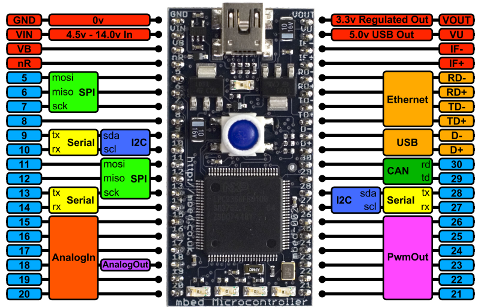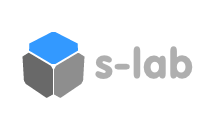The mbed Microcontrollers are a series of ARM microcontroller development boards designed for rapid prototyping.
It includes 512KB FLASH, 32KB RAM and lots of interfaces including built-in Ethernet, USB Host and Device, CAN, SPI, I2C, ADC, DAC, PWM and other I/O interfaces.
Simply put, the mBed is an alternative option for electronics hobbyist who want something more powerful then the Arduino board with a lower level programming language.
How to use :
Once you have your mBed, connect it to your computer using a mini-USB to USB wire.
The mBed should appear as a normal USB flash drive should, this mean you can store files on it.
To make your first program, open a browser and go to http://mbed.org/. You will need to create an account.
Once you have your account set and the mBed in place, you are ready to make your first program, head to https://mbed.org/handbook/mbed-NXP-LPC1768-Downloading and follow the instructions. You will be up and running in no time.

The pinout above shows the commonly used interfaces and their locations. Note that all the numbered pins (p5-p30) can also be used as DigitalIn and DigitalOut interfaces.
Tech specs, Arduino Mega 2560 R3 VS mBed NXP LCP1768
| mBed LCP 1768 | Arduino Mega 2560 R3 | |
| Price | 59$ | 59$ |
| Flash Memory | 2.1 meg | 256k |
| Clock Speed | 96MHz | 16MHz |
| RAM | 32 KB | 8 KB |
| EEPROM | Entire flash memory can be used | 4 KB |
| Pins | 25 pins total, 5 can be used for Analog and 5 for PWM, all can be used for Digial IN/OUT | 54 Digital (15 PWM), 16 Analog |
Online ressources :
mbed NXP LPC1768 Microcontroller Flyer
